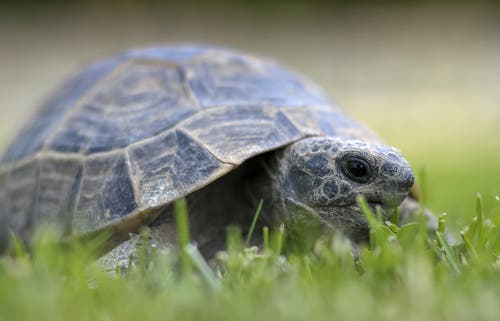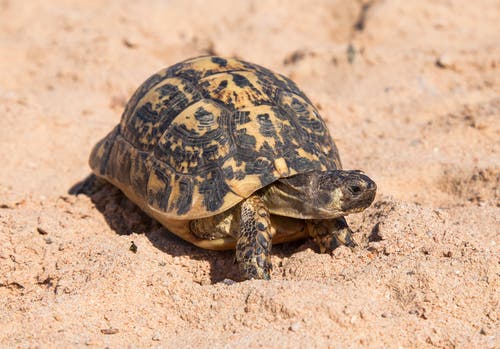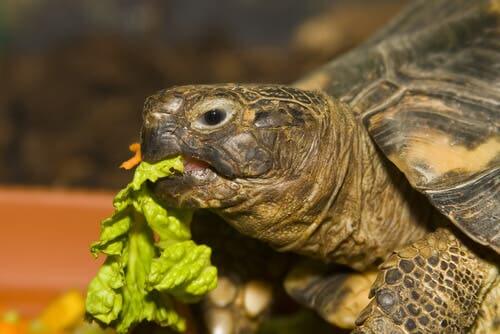Pyramiding in Turtles

Among the various diseases that affect chelonians, pyramiding in turtles is one of the most significant. In fact, it largely depends on how we manage the animals.
What is pyramiding in turtles?
Pyramiding in turtles is a disease that causes shell deformation. Specifically, the portions that make up the shell become deformed. It gives the turtle an abnormal appearance with pyramid-shaped plates.
Beyond deformation, this disease can also cause consequences in the internal organs of turtles. It reduces the space left for organs and especially affects turtles’ lung capacity.
Also, pyramiding in animals causes weakness and may have other limb deformities or even arthritis. In addition, the relationship of the shell to the spinal column can become deformed and result in paralysis.

In the case of the females, pyramiding in turtles of reproductive age can cause other problems, mainly with laying eggs.
What causes pyramiding in turtles?
There are several causes of this disease that affect turtles living in captivity. Pyramiding in turtles occurs when all of an animal’s needs aren’t met. Alternatively, it can also occur when their needs are met in excess.
Probably the most significant cause of this disease is problems with the animal’s diet. It’s a common error to give turtles too much protein. However, the truth is that most species of turtle should only consume meat occasionally, as they are mainly vegetarian.
We recommend that you consult a vet with experience in exotic pets or ask about their needs when you acquire your pet about their needs. In general, land turtles (tortoises) consume primarily fruits and vegetables. However, you need to be careful about the balance between calcium and phosphorus to avoid metabolic bone disease.
Problems with the absorption of calcium is another cause of pyramidism in turtles or tortoises. Another issue is the absorption of vitamin D. As a result, it’s necessary that your turtle gets some sun! In addition, you should also make sure to check for any possible associated problems, such as hormonal problems with their thyroid gland.
Finally, excess food or lack of moisture are possible triggers for pyramiding in turtles. Also, some species are more prone to the disease than others.

Probably the most significant cause of this disease is problems with the animal’s diet. It’s a common error to give turtles too much protein. However, the truth is that most species of turtle should only consume meat occasionally, as they are mainly vegetarian.
Treatment and prevention of pyramidism in turtles
This disease has no treatment. Once the shell is deformed, it’s impossible to return it to its original state.
The best prevention is to prevent the causes of the disease. As we’ve said, diet is key. So, having an adequate and very balanced diet that is appropriate for your species of turtle. In general, they need diets with lots of leafy vegetables with lots of calcium, such as dandelion.
You should also pay special attention to the temperature and humidity of your terrarium. Ideally, the terrarium should have an exterior part. If this isn’t possible, you should let your turtle out into the garden or patio every day.
We also recommend that you visit a vet regularly. Your vet can give you recommendations according to your turtle’s diet. They can also assess whether it’s necessary to use calcium or vitamin supplements.
The best prevention is to prevent the causes of the disease. As we’ve said, diet is key. Having an adequate and very balanced diet that is appropriate for your species of turtle. In general, they need diets with lots of leafy vegetables with lots of calcium, such as dandelion.
